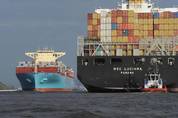
Drewry’s Container Annual Review Forecast 2014/15 emphasizes that the recovery of the container industry, when that happens ? possibly by late 2016 or 2017 ? is to be based around the formation of the new mega alliances and the continued reduction of unit costs, rather than the matching of supply and demand at the individual trade route level. A different recovery is taking shape, which is unlikely to be built on any improvement in freight rates.An orderbook that will see at least 53 and 45 ULCVs delivered in 2015 and 2016 respectively, coupled with the delivery of 100 ships of between 8,000
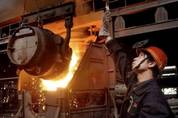
Relevance of china crude steel productionChina’s crude steel production is something that dry bulk shipping investors should watch. Iron ore’s primary use, of course, is the manufacturing of steel. And China is the largest producer and consumer of both iron ore and steel. As a result, the country’s steel production output is a key indicator of shipping rates.To date, China’s steel mills are sticking to steady levels of production. In the upcoming months, this should benefit dry bulk shipping companies such as Safe Bulkers Inc. (SB), Knightsbridge Tankers Ltd. (VLCCF), Navios Maritime Holdings

The total greenhouse gas emissions from the global maritime transport industry are estimated to have been cut by over 20% from 2007 to 2012, the Secretary General of the International Chamber of Shipping (ICS) told a United Nations summit on climate change today.The global maritime shipping industry, which transports an estimated 90% of all world trade, is thought to have produced only about 2.2% of the world’s total greenhouse gas emissions during 2012 compared to 2.8% in 2007.The estimates are contained in a comprehensive study of the shipping industry’s Green House Gas emissions prepared by
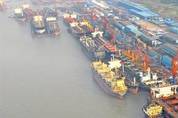
The volume of newbuilding tonnage delivered has fluctuated substantially over the recent great shipbuilding cycle. The number of yards delivering ships (1,000 GT and above) has also varied, peaking at close to 600 in 2010 before falling to 421 last year. This month’s Shipbuilding Focus looks at how the share of deliveries has developed at the very top yards.As the Graph of the Month shows, the number of yards making a delivery has varied significantly since the contracting boom of the mid-2000s. In 2005, 334 yards delivered almost 1,600 ships of 72.2m dwt. This rose to 576 yards delivering ove
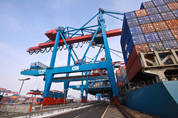
The world’s container ports are forecast to handle more than 840m teu a year by 2018 as annual growth rates accelerate. Projected throughput four years from now compares with 642m teu in 2013 and 674m teu projected for this year. The 2018 projection is double the 2004 throughput figure of 363m teu.The combination of faster traffic growth and strong profit levels is attracting aggressive new players to enter the container terminal-operator business, according to the 11th Global Container Terminal Operators Annual Review and Forecast report published by shipping consultancy Drewry.It says Africa
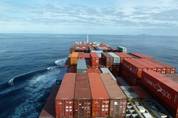
Year-to-date, 997,000 TEU of new containership capacity has entered the fleet. BIMCO forecasts a six-year-high on new ship deliveries, amounting to a bit more than 1.4 million TEU. As the record scrapping level takes its toll, BIMCO expects the fleet growth to be 5.3% in 2014.The scrapped ships were, on average, built in 1992, but range from 1973-1999 (average capacity 2,610 TEU). To put the future demolition potential into perspective, only 553,000 TEU (3.1% of the total fleet) of the active fleet is more than 20 years old (built up to and including 1993). For 2015, the expected scrapping lev

DEMAND :The demand side continues to improve on a global scale. The winter weakness in the US and still-sluggish demand in Europe has been offset by continued strong demand on North-South trades in the Atlantic basin and improving conditions on the ever-strong intra-Asian trading lanes. Demand-side growth is outstripping supply-side growth now, which is something that improves the fundamental balance in the market. This difference is 1-2%, not a landslide change from one day to the next, but a most welcome move in the right direction.It should be borne in mind that the container shipping indus

Last month, the final voyage of the “COSTA CONCORDIA” brought the shipbreaking industry into the spotlight. With international attention increasingly on ship recycling, August’s Shipbuilding Focus takes a look at where ships are demolished globally.A Look Through the ScrapbookThe Graph of the Month shows demolition activity over the last decade. Scrap volumes were relatively weak during the shipping market boom with an average of 6.1m dwt reported recycled p.a. 2005-07. However, the global recession contributed to an upturn in demolition volumes and a record 58.4m dwt was reported recycled in
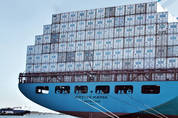
Reefer capacity on the containership fleet is expected to increase by 22% over the next five years, at the expense of a declining specialised reefer fleet, according to Drewry’s latest Reefer Shipping Market Annual Review Forecast.Reefer box capacity is expected to grow from 1.6 million 40ft slots in 2013 to 1.9 million slots in 2018. However, this fleet growth is not expected to adversely impact vessel utilisation levels thanks to strong cargo growth.Reefer container volumes are forecast to rise by 20.5 million tonnes over this period, 16.5 million tonnes by organic growth and 4 million tonn
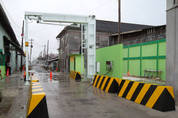
With both Congress and DHS backpedaling on the rule, importers faced little risk of having it implemented this year. For one thing, “the technology just is not there,” said Jonathan Gold, vice president of supply chain and customs policy with the National Retail Federation. (DHS reportedly expects to conclude a review of the applicable technology by the end of this year.)What’s more, the original legislation mandating the rule failed to identify who would pay for setting up and maintaining the entire system.Over the years, U.S. Customs and Border Protection has sought to extend its control ove